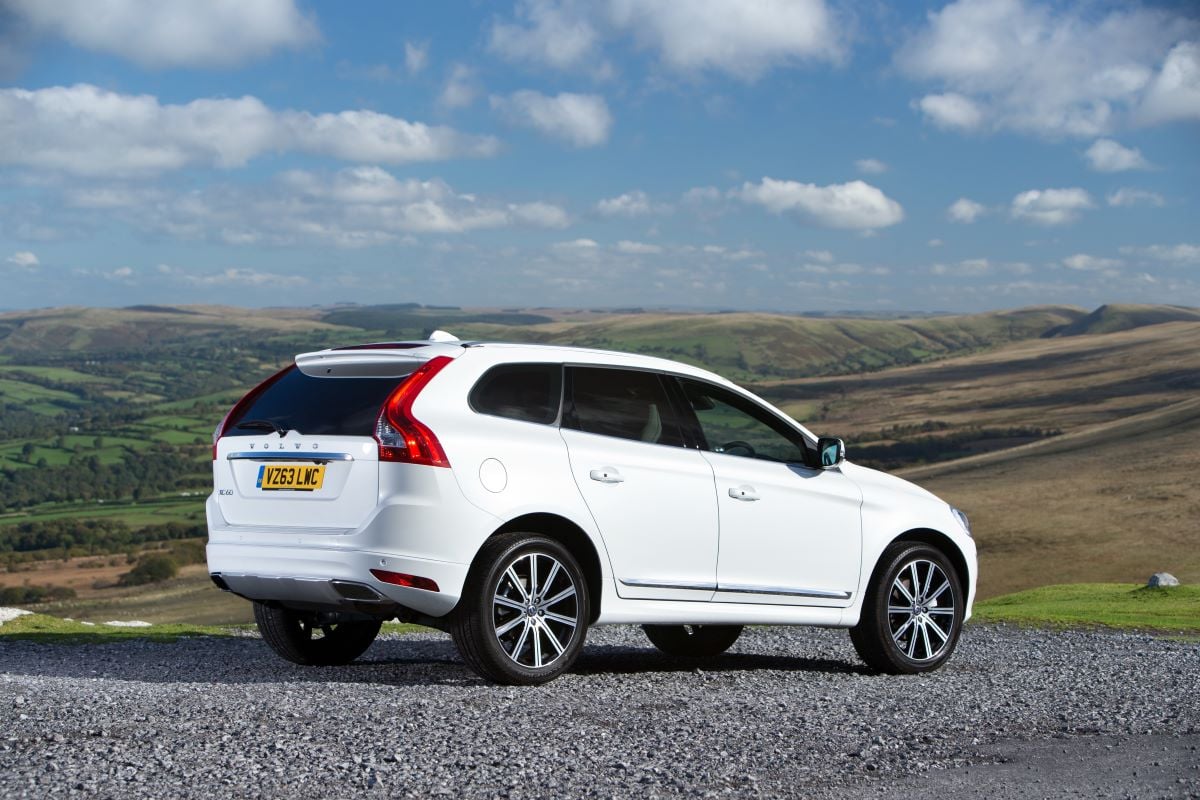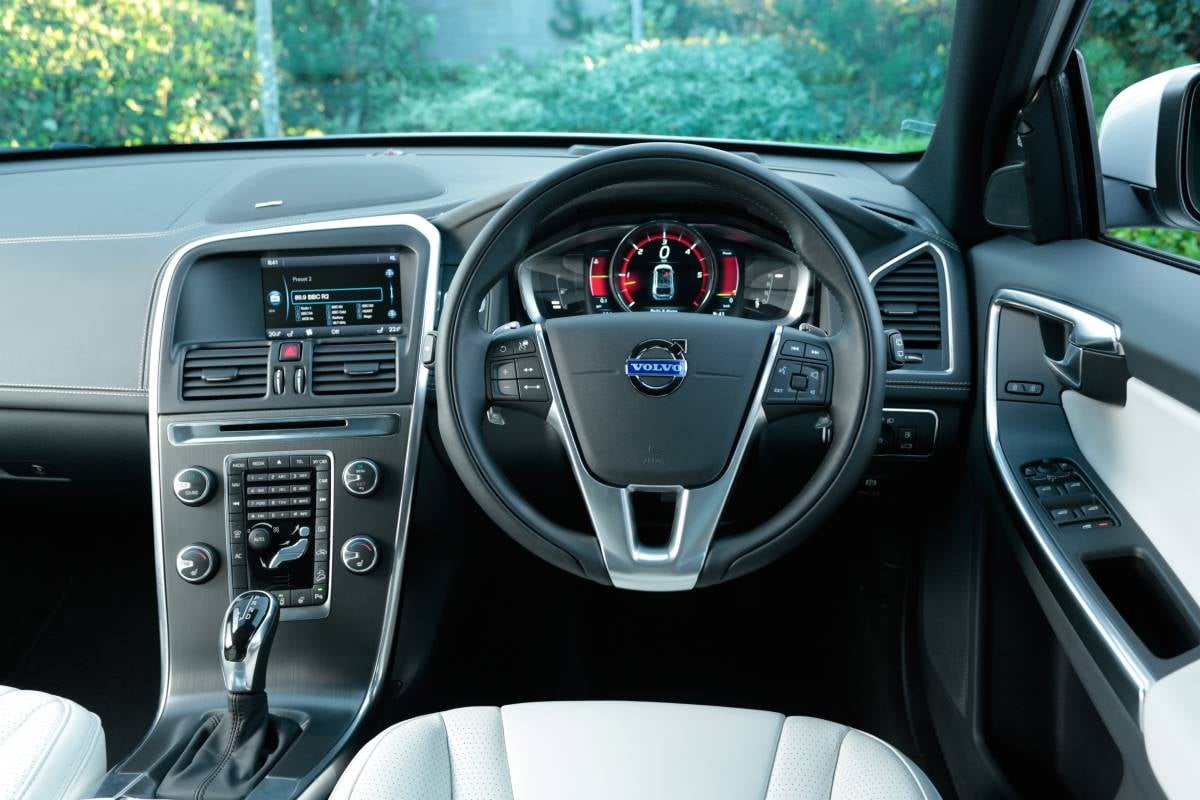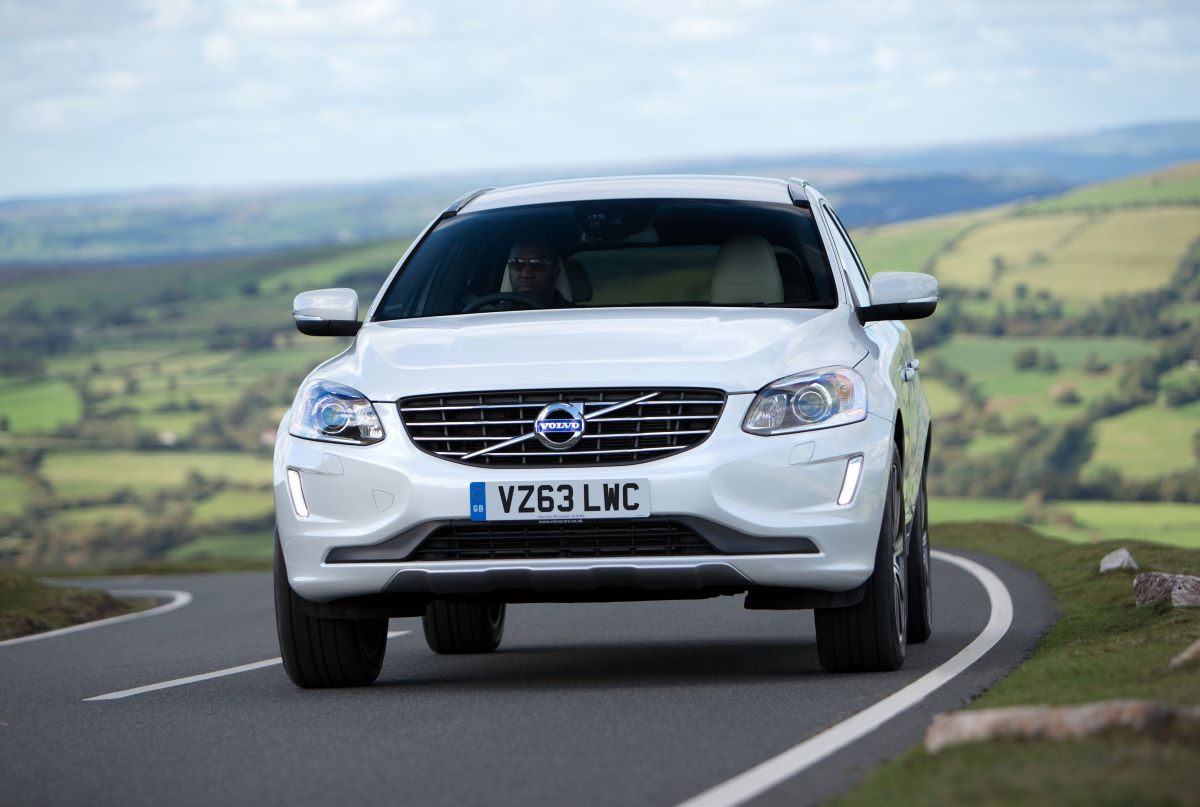
SALE – up to 40% off*
Roadside & Recovery from £5.29 a month*
• Cheaper than AA Price Promise or we’ll beat by 20%^
• We get to most breakdowns in 60 mins or less
• Our patrols fix 4/5 breakdowns on the spot

The updated version of Volvo’s first-generation XC60 was a popular buy, but does it make sense as a used purchase? Our used review gives a deep dive.
Things you'll like
- Comfortable drive
- Well-appointed, premium cabin
- Strong safety record
Things to consider
- Not remotely sporting to drive
- Petrols are thirsty
- Auto harms efficiency on some diesels
History: What is the 2014-2017 Volvo XC60?
Even today, if you ask the average person what image springs to mind when you say ‘Volvo’ it’ll probably be an unashamedly boxy and practical estate car. But the Swedish brand has changed noticeably since those days.
Today, while brilliant estate cars like the Volvo V90 do exist, they’re massively outsold by Volvo’s three core SUV offerings. The groundbreaking XC90 of 2002 set the tone for the next few decades, and with over 1.5 million examples on the roads the seven-seater has become Volvo’s modern icon.
But what is Volvo’s top-selling model? It’s actually the XC60. The brand’s mid-size SUV (sitting above the also popular XC40) quickly reached that 1.5 million figure in 2025 despite the first version not launching until 2008.
In this used review we’ll focus on the first generation XC60, but in its facelifted iteration that spanned from 2014 up until the current second-generation model launched in 2017. It gained styling updates, interior enhancements and a new diesel engine to keep it competitive with cars like the BMW X3 and Audi Q5.
As a used purchase, then, does the 2014-2017 Volvo XC60 stack up? We’ll explore the key things to consider, how much to pay and what issues to look out for here.
Verdict: is the Volvo XC60 a good car?
We reckon the 2014-2017 Volvo XC60 is a strong alternative to the German brand premium SUV norm, offering a smart design inside and out, good quality, a comfortable ride and a strong safety record, along with decent practicality.
Sure, there are nicer driving alternatives out there, but you get quite a lot of solid car for your money with the XC60. However it’s worth considering that certain engines have a better reliability reputation that others, while some are also thirsty and costly to tax.
Specs and used pricing
The 2014-on XC60 came with a revised trim structure, with five trim levels including a limited-run (and exceedingly rare on the used market) Ocean Race special edition dedicated to the brand’s sponsorship of a round-the-world yacht race.
Entry-level SE trim still comes with a healthy kit tally, including climate control, rear parking sensors, an electric tailgate, auto-folding mirrors with puddle lights, DAB radio, Bluetooth, an auto-dimming rear view mirror and Volvo’s High Performance Sound audio system.
Stepping up to SE Lux trim brings leather upholstery, electric memory adjustment for the driver’s seat, xenon headlights with a cornering function and 18-inch alloy wheels.

R-Design brings a more sporting focus with a sports chassis setup, revised power steering and exterior detail upgrades. Inside you’ll find R-Design specific sports seats with part-leather upholstery, a sports leather steering wheel and aluminium interior trim elements.
R-Design Lux adds many of the same upgrades applied in SE Lux trim, while most of the listed trims could be upgraded further to ‘Nav’ trim. This brings sat-nav, as the name suggests – a system that’s getting on a bit but still supported by Volvo.
In terms of pricing, you’ll want around £5,000 to get in to a 2014 XC60 with 150-200,000 miles on the clock – if that sounds like a lot, many of these will have been ploughing motorways most of their lives, so go on condition and service history. There are examples under £5,000, but these tend to have poor maintenance history or be category write offs.
Stepping your budget up closer to £7,000 gives you access to a wider range of better condition, lower mileage models, but the very best one-owner 2017 cars can fetch £10-12k depending on spec. You’ll find the vast majority of XC60s for sale are D4 or D5 diesels.
Rivals
The mid-size SUV market wasn’t quite as vast and diverse in the mid-2010s as it is today, but there were still plenty of rivals for the XC60. Chief competitors included the BMW X3, Audi Q5, Range Rover Evoque and Lexus NX, while the Mercedes-Benz GLC and Land Rover Discovery Sport also launched late in this generation XC60’s life.
If you can do without a high-end badge on the bonnet, other family SUV options include the Volkswagen Tiguan, Ford Kuga, Honda CR-V and Toyota RAV4.
Interior and practicality
You’ll notice more visual changes to the exterior of the 2014-on XC60 than you will for the interior. Compared to the older 2008-on model the overall design isn’t drastically different, but then its smart design and quality finish were among the best in class back then anyway.
Some better quality finishes such as new wood inlays, metal trim elements and a nicer headlining help lift the XC60’s cabin further. It should be hard-wearing, too, and the usual Volvo seat comfort is present and correct with plenty of adjustment and support. You also sit high up, giving you a great view down the road.
Nowadays, of course, the button-heavy floating centre console might look a little dated, but with some familiarisation it’s easy to get on with. The central screen, meanwhile, is on the small size and looks a bit unsightly set to the right of the dashboard. The lack of a touchscreen also dates it, but it’s functional enough and the sat-nav isn’t too bad.
The digital dials are a lot more modern and clean-looking, though, and the rest of the XC60’s interior is logically laid out.

Passenger space, storage and boot space
The XC60 was designed to offer the SUV appeal of the hugely popular XC90 in a smaller package, but its dimensions hardly make it a compact SUV. At 4627mm in length, 1891mm in width and 1713mm in height, it’s actually longer than the Land Rover Discovery Sport, despite only having five seats.
Space for passengers and luggage is pretty generous as a result. You’ll have no complaints up front, while storage is good and includes a handy phone shelf behind the typically Volvo floating dashboard.
In the rear you’ll find a bench that sits higher than the front seats for a better view out, but that doesn’t come at the expense of headroom which is still generous even for adults. The optional panoramic sunroof doesn’t rob much space, either, while legroom is good and the cabin’s width means it’s possible to squeeze three adults across the back – though three kids would be more comfortable for longer trips.
We like handy optional touches including neat two-stage booster cushions for children in the outer rear seats – if you find one on the used market it’s a great family-friendly feature.
Those rear seats themselves fold in a handy 40/20/40 configuration, letting you carry two passengers while sliding longer items such as skis between them.
Mind you, even with the seats up the 495-litre boot capacity is pretty good - if 50 litres or so short of the BMW X3 and Audi Q5 of the era. Still, the wide tailgate means loading big items is easy, while underfloor storage that can only be opened with the tailgate lifted aids security.
What is a used Volvo XC60 like to drive?
Old car brand stereotypes often ring true: you buy a Volvo for a safe and comfortable driving experience, and a BMW for something with a sporting edge.
The XC60 follows that legacy to a tee: it’s at its best when cruising or pottering about town. Low noise levels and soft suspension means bumps are smothered well at all speeds and it’s a relaxing place to sit.
R-Design models trade some of this comfort in an attempt to feel more tied down in the bends, with larger wheels and firmer suspension. But really, this isn’t an engaging driver’s car: the steering’s vagueness and slow response, along with evident body lean, puts pay to any attempts at hard cornering.
Better to enjoy the typically comfortable Volvo seats and soak up the miles in comfort, which is why we’d advise avoiding R-Design models that detract a little from that experience.
Engines
This generation of XC60 was launched in an era where diesel still dominated, but there were a couple of gutsy (and hard to find for sale today) petrol offerings: the T5 and the T6.
Old Volvo owners will be disappointed to find out that this generation of T5 isn’t a five cylinder in the UK, rather a 2.0-litre four-cylinder turbo related to the engine you’ll find in this era of Ford Focus ST. It puts out 240hp through the front wheels and a six-speed ‘Powershift’ automatic, giving a respectable 0-62mph time of 8.1 seconds.
The all-wheel drive T6 is even rarer on the used market than the T5. Its 3.0-litre V6 puts out a stout 304hp and drops the 0-62mph time to 6.9 seconds. It’ll be a sought-after rarity in future, but for now it’s thirsty and not wholly suited to the XC60’s brief as a comfort-focused family SUV.
Well over 95 percent of 2014-2017 XC60s for sale are diesels. Most of these are the 181hp 2.0-litre D4 linked to a new-at-the-time eight-speed automatic gearbox. Despite the economy focus its 0-62mph time of 8.5 seconds means it feels swift and flexible, while being a little quieter than the D5.
Speaking of which, it’s the venerable 2.4-litre five-cylinder D5 that remains the Volvo enthusiast’s engine of choice thanks to its well-proven mechanicals and distinctive (if gruff) engine sound. With 215hp it’s no slouch, but with the old six-speed automatic gearbox and all-wheel drive it’s barely any quicker in reality than the D4. A manual was offered, but you’ll struggle to find one used.
As an aside, the first year of this facelifted XC60 came with a D4 variant using a lower-powered 181hp version of the five-cylinder D5 unit – a confusing change that you could easily miss. When the new four-cylinder D4 arrived this was only offered in AWD form.
As a factory option Volvo’s in-house tuning arm, Polestar, offered software upgrades to boost the power output of the top-end models. The D5 was boosted to 230hp, while the T6 AWD was taken up to 329hp – with no impact to efficiency. These aren’t all that easy to find now, however.

Ownership, running costs and reliability
It’s not hard to see why diesel XC60s flew out of showrooms while petrols remain rare when you look at running costs. The T5 petrol promised a reasonable but hardly frugal 33mpg combined, while the T6 offers an even less palatable 26.4mpg combined.
The most frugal diesel, the front-wheel drive D4 manual, is vastly more efficient, promising 62.8mpg combined. You’ll lose around 3mpg by opting for the automatic.
The D4 AWD is the old five-cylinder unit and promises 53.3mpg combined in manual form, or 44.1mpg when paired with the old Geartronic automatic. Interestingly, the D5 AWD posts exactly the same official figures despite being in a higher state of tune.
Another reason the T6 petrol is a bit of a unicorn is its extortionate car tax costs: high emissions mean you’ll pay an eye-watering £735 a year to tax it. Meanwhile the manual D4 diesel costs just £30 a year to tax – but in D4 AWD or D5 form there’s a massive CO2 emission difference of 30g/km between manual and automatics, jumping the annual VED bill in 2025 from £195 to £315.
If you can find a last-of-the-line model registered after April 2017 the road tax changes to a flat £195 a year figure for all versions. That’s either a bonus or an annoyance depending on which version you’re considering. It's also wo
There are few significant reliability issues to worry about with this generation of XC60, but that doesn’t mean you shouldn’t buy with care. Early cars could suffer expensive electrical gremlins, so check everything works on a test drive – these should have mostly been ironed out by the time this facelifted model arrived.
The 2.4 diesel used in the D4 AWD and D5 is a famously robust engine, and if the maintenance record is kept up to date it shouldn’t prove troublesome.
The same can’t quite be said for the 2.0-litre D4: pre-2016 models can suffer high oil consumption that can only be rectified expensively, while EGR valves are prone to issues. It’s also an engine that’s had a few recalls for serious issues, so check these have been completed via the DVSA’s recall checker website.
The 2.0-litre T5 (effectively the same engine as the Ford Focus ST) is also known to suffer oil consumption issues, while turbo failures aren’t uncommon at certain age. The T6 has proven reliable, though the lack of reported issues could be down to its rarity in the UK.
Don't forget the basics when you're looking at a used Volvo XC60, either. Replacing things like the car battery, the brake pads and discs and even the exhaust can quickly rack up costs on a premium model such as this. It should go without saying that it's well worth seeking out a model with full service history, too.
Euro NCAP: is a used Volvo XC60 a safe car?
Volvo has had an enviable reputation for safety for many decades, so it goes without saying that the XC60 achieved the maximum five-star rating when tested by Euro NCAP back in 2009.
That score included a very strong 94% adult occupancy rating, although the BMW X3 offers marginally better protection for children. Unfortunately for Volvo it isn’t a particular selling point in the premium SUV class – the X3, Audi Q5, Lexus NX and Range Rover Evoque all achieved the same Euro NCAP rating.
Where Volvo did have the edge at the time was with active safety tech, along with six airbags, stability control, brake assist and whiplash protection, all XC60’s came with autonomous emergency braking as standard. Rivals couldn’t claim that, even if Volvo’s City Safety system only worked up to speeds of 19mph.
Other systems available on the XC60 that were relatively novel at the time included a collision warning system with pedestrian detection, lane departure warning, blind spot monitoring, traffic sign recognition and trailer stability assist. All of these systems we take for granted on new cars but certainly weren’t commonplace back in 2014.
Volvo XC60 FAQs
Is the 2014-2017 Volvo XC60 a good car?
We reckon a used Volvo XC60 is an excellent choice if you’re after a more affordable premium family SUV. Comfortable, well-equipped, well-made and with a top-notch safety record, it’s a strong used buy.
Which is the best used Volvo XC60 to go for?
We’d recommend going for an SE or SE Lux model for the best balance of equipment and cruising ability – R-Design models look great but sacrifice some comfort. The D5 engine isn’t the quietest unit around but it’s strong, reliable and reasonably efficient – making it our pick.
How much is a 2014-2017 Volvo XC60?
Expect to pay around £5000 or less for high mileage, well-used 2014 XC60s with lower spec, all the way up to over £12,000 for well looked after low-mileage 2017 examples with all the bells and whistles.











![BMW X3 [F25] (2010 - 2017) used car review](https://d1gymyavdvyjgt.cloudfront.net/drive/images/made/drive/images/remote/https_d2yv47kjv2gmpz.cloudfront.net/filestore/8/3/5_f4eb8b2e26abcd3/0e0f5714b626b6f47f5508e8f4ef8543/538_34381d777d07675_100_100_70_c1_c_c.jpg)

